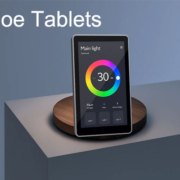What Is Zigbee And How Does It Work?
In today’s era of smart homes and connected devices, Zigbee has become one of the most popular communication protocols. It powers many of the devices we use daily, from smart lighting and security systems to home automation hubs. But what exactly is Zigbee, and how does it work?
What Is Zigbee?
Zigbee is a wireless communication protocol designed for low-power, low-data-rate applications. It is based on the IEEE 802.15.4 standard and operates in the 2.4 GHz frequency band (with some regional variations). Unlike Wi-Fi or Bluetooth, Zigbee is not focused on high-speed data transfer. Instead, it is optimized for reliability, energy efficiency, and scalability, making it ideal for smart home and Internet of Things (IoT) applications.
- Some common devices using Zigbee include:
- Smart bulbs and lighting systems
- Door and window sensors
- Smart plugs and switches
- Thermostats and HVAC controls
- Security cameras and alarms
How Does Zigbee Work?
Zigbee devices communicate through a mesh network, which is one of its most powerful features.
1. Mesh Networking
In a Zigbee mesh network, devices don’t just communicate with a central hub — they can also relay information to each other. This creates a self-healing network, where data can take multiple paths to reach its destination.
2. Roles of Devices
Zigbee networks include three main types of devices:
- Coordinator: The brain of the network. It starts the Zigbee network and manages its security and routing.
- Router: Helps extend the network by passing signals between devices.
- End Device: Low-power nodes (like sensors) that communicate through routers or the coordinator.
3. Low Power Consumption
Zigbee is designed for devices that need to run for years on small batteries. Sensors and switches can stay in sleep mode most of the time, waking only when they need to send or receive information.
4. Scalability
One of Zigbee’s strengths is its ability to support hundreds of devices in a single network. This makes it perfect for large smart homes or commercial automation systems.
Benefits of Zigbee
- Energy Efficiency: Ideal for battery-powered devices.
- Reliability: Mesh networking ensures strong coverage.
- Interoperability: Zigbee Alliance (now Connectivity Standards Alliance, CSA) certifies devices for compatibility.
- Scalability: Can connect a large number of devices seamlessly.
Zigbee in Smart Homes
Zigbee has become a cornerstone of smart home automation. Many popular smart hubs — such as Amazon Echo devices with Zigbee built-in — allow homeowners to control lights, locks, and sensors from a single system. With its low energy use and reliable networking, Zigbee helps create smarter, safer, and more efficient living spaces.
Portworld Zigbee Smart Control Panel Solutions
At Portworld, we take Zigbee integration to the next level with our OEM/ODM smart touch control panels. Designed for homes, offices, and hotels, our panels combine Zigbee connectivity with Android-based systems to provide:
- Centralized Control of lighting, HVAC, curtains, and security devices.
- Seamless Integration with Zigbee smart sensors, switches, and gateways.
- Customizable Hardware & Software to match your project requirements.
- Multiple Sizes (from 4” to 14”) to suit different application scenarios.
For businesses, Portworld also offers OEM/ODM solutions, including logo customization, UI design, and firmware optimization, helping brands deliver professional-grade smart home products to the market quickly and efficiently.
Zigbee is not about speed but about reliable, low-power connectivity. Its mesh networking, scalability, and energy efficiency make it a preferred choice for smart home and IoT applications worldwide. With solutions like Portworld’s Zigbee smart control panels, you can create automation systems that are not only reliable and efficient but also tailored to your unique needs.



